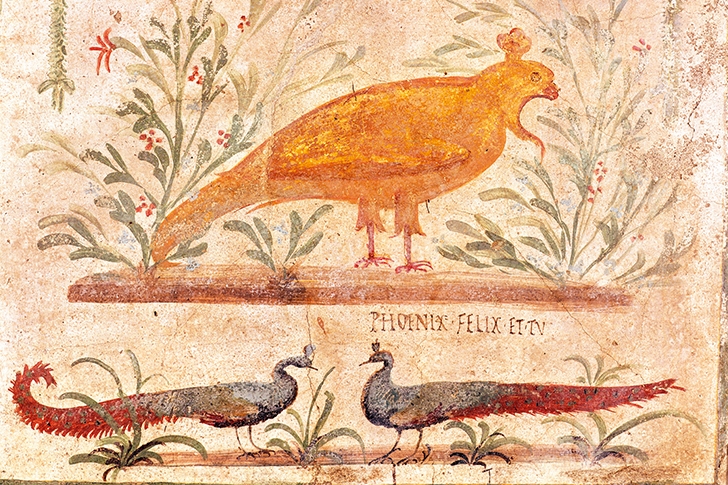The most appealing phoenix in literature is surely the eponymous bird from E. Nesbit’s 1904 classic, The Phoenix and the Carpet. A mysterious egg arrives in the children’s nursery on Guy Fawkes night (J.K. Rowling’s phoenix, ‘Fawkes’, is the clear literary descendant), and the five children, whose adventures unfold in an atmosphere of benign neglect, manage to set fire to the nursery — involving paraffin and fire-crackers — and trigger the rejuvenation of the mythical bird.
The children recognise the creature from book illustrations, and pull down ‘the old encyclopedia’ to read up on the entry from page 246: a fabulous bird from antiquity, the only one of its kind, it is said to live for 500 years in the wilderness, at which point it builds a nest of ‘sweet wood and aromatic gums’, burns itself up and rises again from a worm left in its nest. Sporting gold and purple plumage, it is, they read, the size of an eagle. (The phoenix, easily ruffled, objects, noting that ‘eagles are of different sizes,’ and that the bit about the worm is a ‘vulgar insult’; it has hatched like any respectable bird.) Nesbit consistently refers to the bird as an ‘it’, glamorously epicene. In a few witty pages, she lays out traditional phoenix lore and some of its myriad variations.
Nesbit is quoting from an actual book, The London Encyclopedia or Universal Dictionary of 1839. Phoenixes seem to belong to encyclopedias somehow — perhaps a reference book, rather than far Arabia, is its native habitat. After all, the phoenix first appears in western literature in a travelogue by the historian Herodotus (fifth century BC), who, in the course of describing curious animals of Egypt, mentions a bird about ‘the size of an eagle’ with red and gold plumage, which shows up in Egypt every 500 years.







Comments
Join the debate for just £1 a month
Be part of the conversation with other Spectator readers by getting your first three months for £3.
UNLOCK ACCESS Just £1 a monthAlready a subscriber? Log in